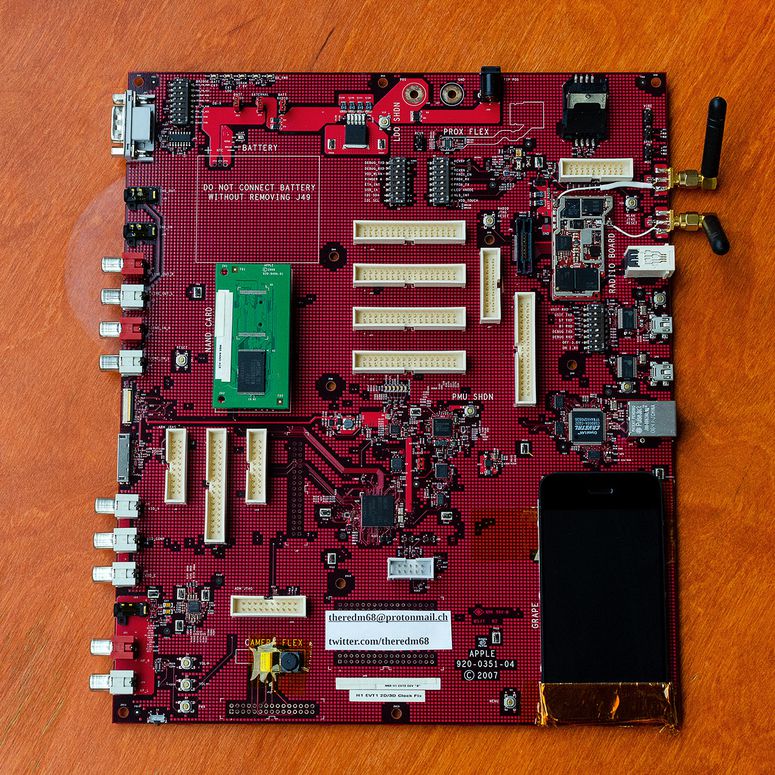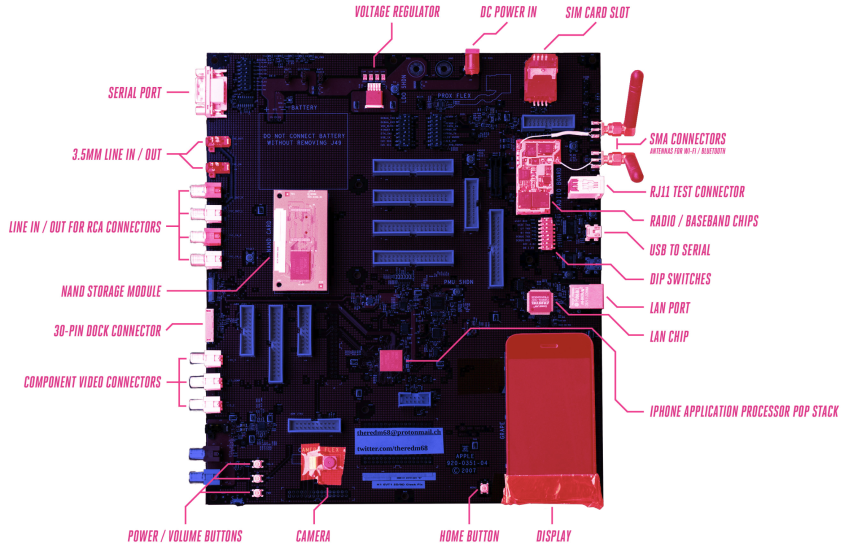What was the first iPhone?
- Transfer

Photo: Tom Warren A
strange question. Many saw his presentation, in which Steve Jobs, in particular, said that the new smartphone was developed for two and a half years. Shortly after this, the novelty appeared on the shelves of communication salons.
It is curious to see what prototypes the modern iPhone and iPadBut it turns out that the very, very first iPhone looked like a large board similar to the motherboard. He made one of them
kriokamera had , from here

Graphics: Wil Joel
Of all the connectors that were present on the prototype board, only two remained in the serial iPhone - the “jack” and the now almost forgotten 30-pin connector, which by then had already been used in all iPods. Therefore, connecting the board to the computer was not a problem: each employee of the company had the corresponding cord. Subsequently, the connector remained unchanged up to and including the iPhone 4s.
Three “tulips” were used to connect the board to a TV with RGB input (almost any TV with a SCART connector was suitable). The fact is that on some of the prototypes there were no displays. Four more “tulips” made it possible both to remove the audio signal from the board and to supply it there, simulating a headset. Two 3.5 mm jacks served the same purpose.
Well, if the display, for some reason designated as Grape, was present, the place under the Home button was sealed. And the corresponding button was located on the board next to it. On the left of the board were three more buttons: power, volume up, volume down. And the camera on the loop, as well as a place under the "prox flex" - a loop not yet developed by the time the “ear sensor” board was made. Prior to this, there were no such sensors, since devices with resistive sensors did not need them.
Two huge antennas were intended for communication via WiFi and Bluetooth. An engineer could connect to the RJ11 connector ... an ordinary wired telephone that simulates a regular microphone and iPhone speaker. And to RJ-45 - a patch cord from a wired router.
If the 620-MHz processor Samsung K4X1G153PC (ARM1176JZF) is soldered to the board, then the two boards are removable. The first of them is a radio module, which practically does not differ from that used in the serial first iPhone. It uses chips from Intel, Infineon, CSR, Marvell and Skyworks. The second is more interesting - on it is located flash memory Samsung K9HBG08U1M with a capacity of 4 GB. To work with the firmware of another version, it was enough to quickly change the board - like a cartridge in a game console.
Apparently, there was not enough power through the 30-pin connector on the board. Therefore, the developers have provided a coaxial connector and a linear stabilizer with a low voltage drop. The button located next to it allowed to disable it. Do you want to check how the board behaves with the battery? Solder it to the appropriate pads by first removing the jumper J49. And make sure that everything works correctly, before getting into production. JTAG connectors, as it should be, are designed for low-level firmware and debugging, and many large connectors, similar to those designed for floppy drives, allow you to connect probes and observe signals on different lines using an oscilloscope.
When they tried to turn on the board, she showed a logo with an apple and did nothing else. When connected to a computer with a modern version of iTunes, it was identified as an iPhone, ready for recovery.
Starting with the fourth iPhone, prototype boards began to be made more miniature . And even later, they began to cover with lining on those areas that employees should not know about the device before starting sales. Other smartphone makers also give developers similar prototype boards.
PS If you are reading it now at the Apple Museum of Technology , try contacting The Verge, and suddenly you can get a fee from them.
